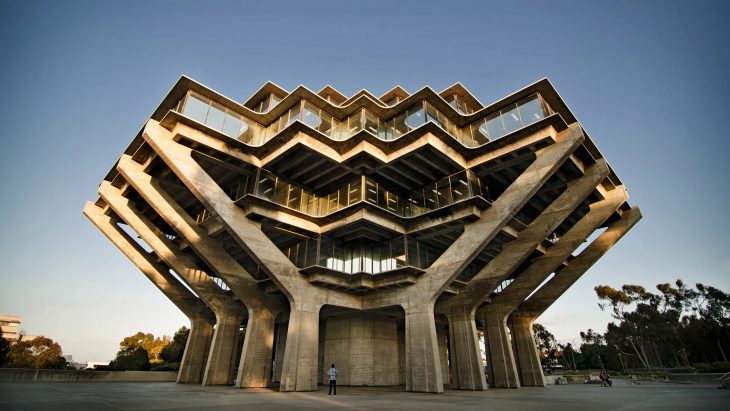
Architecture is a fascinating field that combines art, science, and design to create structures that shape our environment. From ancient civilizations to modern skyscrapers, architecture has played a pivotal role in defining the character of societies and the built environment. In this article, we will explore 11 intriguing facts about architecture that highlight its rich history, technological advancements, and cultural significance.
Architecture: A Blend of Art and Science
Architecture is often referred to as the art and science of designing and constructing buildings. It encompasses a wide range of disciplines, including engineering, mathematics, aesthetics, and sociology. Architects must not only create visually appealing structures but also consider factors such as functionality, sustainability, and safety.
Ancient Origins of Architecture
Architecture has roots in ancient civilizations that date back thousands of years. The Egyptians, for instance, built monumental pyramids and temples that still inspire awe today. The Greeks introduced the concept of classical architecture, characterized by harmonious proportions and the extensive use of columns. The Romans, renowned for their engineering prowess, constructed massive structures like the Colosseum and aqueducts.
Gothic Architecture and Cathedrals
Gothic architecture emerged in Europe during the medieval period and is known for its pointed arches, ribbed vaults, and soaring spires. One of the most remarkable examples of Gothic architecture is the Notre Dame Cathedral in Paris, which showcases intricate stained glass windows and elaborate stone carvings.
Renaissance and the Birth of Modern Architecture
The Renaissance brought a renewed interest in the arts and sciences, leading to a revolution in architecture. Architects such as Filippo Brunelleschi and Andrea Palladio explored the principles of classical architecture, resulting in buildings that emphasized proportion, symmetry, and the revival of ancient Roman and Greek styles.

The Skyscraper Revolution
The invention of the elevator and advancements in structural engineering in the late 19th century paved the way for the rise of skyscrapers. The Home Insurance Building in Chicago, completed in 1885, is often considered the first skyscraper. Today, cities around the world boast breathtaking skylines, with towering buildings that push the limits of design and engineering.
Sustainable Architecture and Green Design
In recent years, sustainable architecture has gained prominence as a response to environmental concerns. Architects now strive to create energy-efficient buildings that minimize their impact on the planet. Concepts such as passive design, green roofs, and the use of renewable materials are integral to sustainable architecture.
The Influence of Technology
Technology has had a profound impact on architecture, enabling architects to design and construct buildings more efficiently and imaginatively. Computer-aided design (CAD) software allows for precise modeling and visualization of structures before construction begins. Additionally, advancements in construction techniques and materials have pushed the boundaries of architectural possibilities.
Iconic Architectural Marvels
Throughout history, certain architectural marvels have captivated the world with their grandeur and innovation. The Taj Mahal in India, a UNESCO World Heritage Site, is a breathtaking testament to Mughal architecture. The Guggenheim Museum in Bilbao, Spain, designed by Frank Gehry, stands as an architectural icon with its titanium-clad curves. Each of these structures tells a unique story and showcases the ingenuity of human creativity.
The Role of Cultural Identity
Architecture is deeply intertwined with cultural identity. Different regions and civilizations have distinct architectural styles that reflect their history, traditions, and values. The pagodas of Asia, the mud-brick buildings of Africa, and the timber-framed houses of Europe are all examples of architectural styles that reflect cultural heritage and local craftsmanship.

Urban Planning and City Design
Architecture goes beyond individual buildings; it also encompasses urban planning and city design. Architects collaborate with urban planners to create functional and aesthetically pleasing cities. Considerations such as transportation, public spaces, and zoning regulations play a crucial role in shaping the urban landscape.
The Future of Architecture
As technology continues to advance and societal needs evolve, the future of architecture holds exciting possibilities. Concepts such as sustainable cities, smart buildings, and adaptive reuse are gaining prominence. Architects are exploring innovative materials and techniques, such as 3D printing and robotic construction, to push the boundaries of design and create more sustainable and livable spaces.
Architecture is an ever-evolving field that combines creativity, functionality, and societal needs. From ancient wonders to modern marvels, it shapes the world we inhabit and influences our daily lives.
Conclusion
In conclusion, architecture is a captivating field that combines art, science, and design to create structures that shape our world. From ancient wonders to futuristic concepts, architecture continues to evolve, reflecting the needs and aspirations of society. By understanding the rich history and innovations within architecture, we gain a deeper appreciation for the structures that surround us and the individuals who bring them to life.
Frequently Asked Questions (FAQs)
What skills are required to become an architect?
To become an architect, one needs a combination of technical and artistic skills. Proficiency in mathematics, engineering principles, and computer-aided design (CAD) software is essential. Additionally, creativity, problem-solving abilities, and strong communication skills are vital for successful architectural practice.
How long does it take to study architecture?
The duration of architectural studies varies depending on the country and educational institution. Typically, a bachelor’s degree in architecture takes around four to five years to complete. Pursuing a master’s degree may require an additional two to three years of study. Furthermore, aspiring architects often need to complete an internship and pass a licensing examination before practicing professionally.
What is the role of an architect in sustainable design?
Architects play a crucial role in sustainable design by integrating environmentally friendly principles into their projects. They consider factors such as energy efficiency, use of renewable materials, and design for natural light and ventilation. By incorporating sustainable practices, architects contribute to reducing the ecological footprint of buildings and creating more environmentally conscious structures.
How does architecture impact our daily lives?
Architecture shapes our daily lives in numerous ways. It influences the functionality and aesthetics of the buildings we inhabit, work in, and visit. Thoughtfully designed spaces can enhance our well-being, inspire creativity, and promote social interactions. Architecture also plays a role in defining the character and identity of cities, contributing to the overall quality of life.
What are some famous female architects throughout history?
Although historically underrepresented in the field, there have been notable female architects who made significant contributions to architecture. Some famous female architects include Zaha Hadid, known for her bold and visionary designs; Maya Lin, the architect behind the Vietnam Veterans Memorial in Washington, D.C.; and Eileen Gray, a pioneer of modernist architecture and furniture design.
Was this page helpful?
Our commitment to delivering trustworthy and engaging content is at the heart of what we do. Each fact on our site is contributed by real users like you, bringing a wealth of diverse insights and information. To ensure the highest standards of accuracy and reliability, our dedicated editors meticulously review each submission. This process guarantees that the facts we share are not only fascinating but also credible. Trust in our commitment to quality and authenticity as you explore and learn with us.
